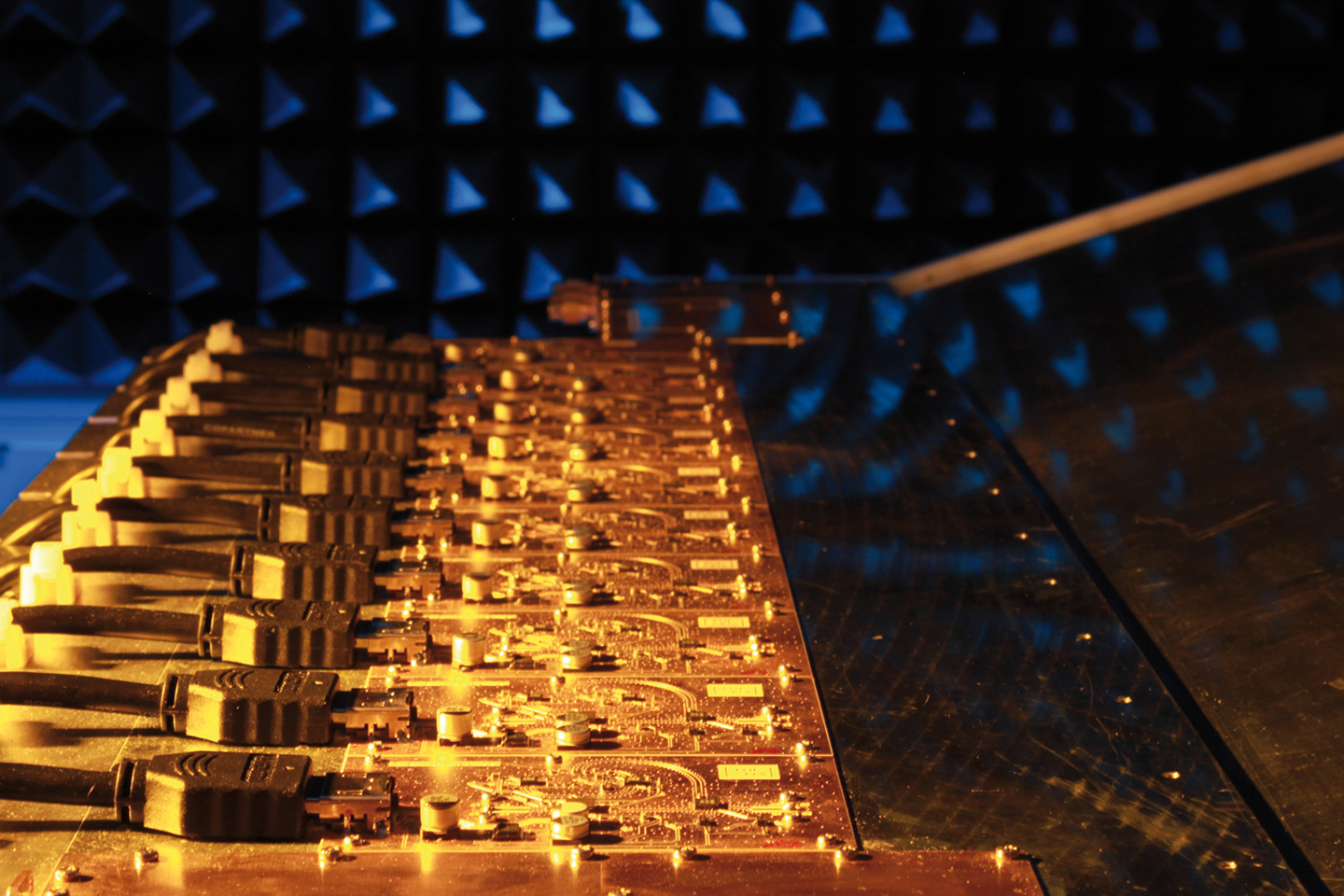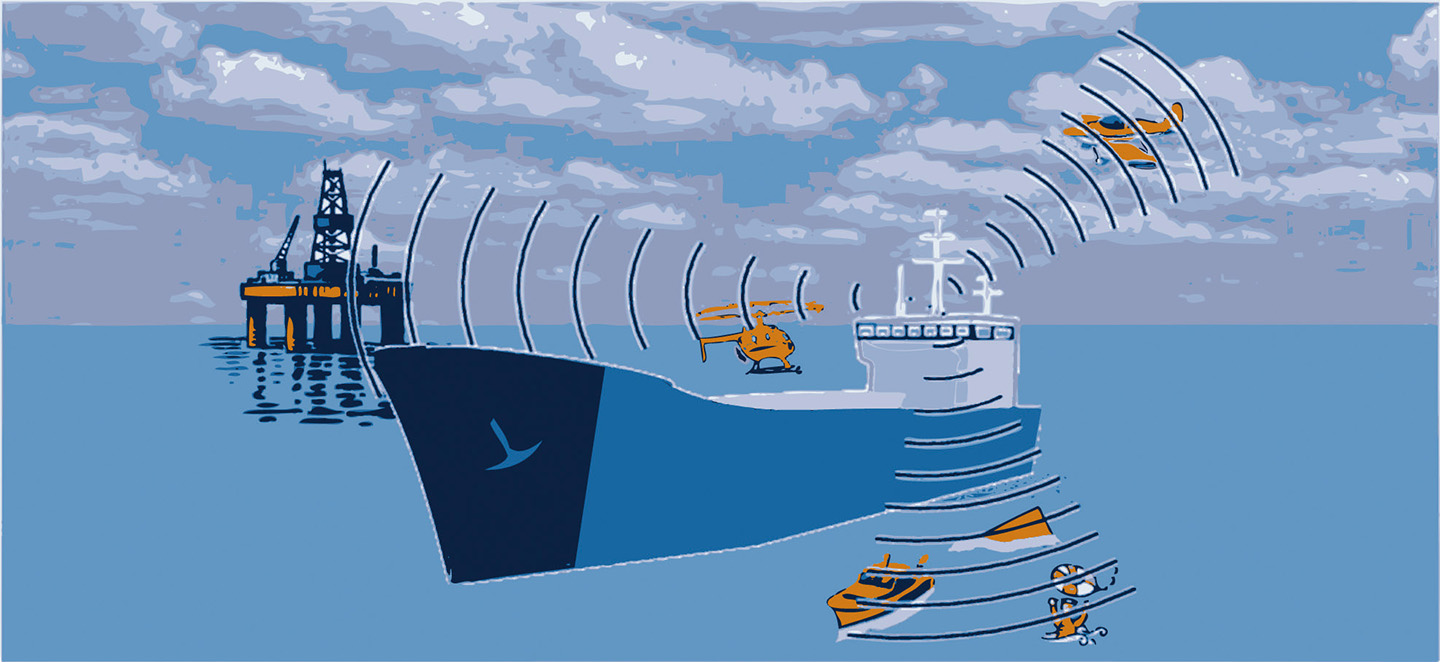MARITIME RADAR WITH ELECTRONICALLY CONTROLLED ARRAY ANTENNA


Radar systems with rotating antennas have been standard equipment in the maritime environment for decades and are characteristic for the appearance of maritime vessels. This technology is widespread, fully developed and cost effective. Amendments of the legal requirements and new developments from Fraunhofer FHR could, however, contribute to a new trend in this area and the entrance of a new generation of devices that offers longer maintenance intervals, improved features and enhanced safety.
Radar devices make an important contribution to safety in maritime transport. They support the crew in navigational tasks and warn of collisions with obstacles in dense traffic or while navigating in difficult waters. Due to the utilization of microwaves, they can also operate at night or in poor visibility. The continuous increase in the number of transports and ships has, however, led to a great increase in the demands placed on radar systems. In some situations, the higher traffic density requires a better resolution, particularly in the close range area. Most of the navigation and surveillance systems currently being used today do, however, work with an obsolete RF technology: they use a mechanically rotating antenna and signals are generated by magnetron tubes which do not permit the utilization of coherent signal processing techniques.
Two new developments indicate the emergence of a new trend: an amendment of the regulations for maritime navigation provides for the operation of S-band radar systems with reduced transmit power. This will pave the way for the utilization of semiconductor amplifiers and coherent signal processing techniques in the future. Ideally, the mechanically rotating antennas can be replaced by array antennas that offer electronic beam scanning. Up to now, the use of array systems in civil fields proved to be uneconomical due to the high costs for electronic components. However, thanks to ongoing technical development and the increased integration of components in application-specific integrated circuits (ASICs), transmit-receive modules can now be produced in a more cost-effective manner. The principle of phased array antennas will therefore become more attractive for civil radar applications. Coherent signal processing techniques and highly agile beam scanning enable the identification of a much larger number of objects with smaller dimensions and tracking with higher precision. This feature is not only suitable for standard navigation tasks but can also be used in other application areas, e.g. in the surveillance of port facilities, coastal areas and river sections, in the search for shipwrecked persons or to warn of floating obstacles that are difficult to identify, such as icebergs or lost containers. Since active array antennas, in addition to the simplified mechanical installation, remain operational also with a certain number a defect antenna elements (graceful degradation) and the well-established magnetron tube is replaced by distributed RF power generation, significantly reduced maintenance is to be expected compared to conventional systems. The current and steadily increasing threat from pirates in waters throughout the world represents a real danger for commercial shipping. Civilian vessels are an easy target in the danger-prone regions: pirates approach the unarmed cargo ships with small, highly maneuverable speedboats, board the vessels and use weapons to take control of them. According to International Maritime Bureau figures, 293 piracy incidents were recorded around the world in 2008. This represented a significant increase on the numbers from previous years. In addition to high costs for the affected shipping and insurance companies, the lives and limbs of the crews are being exposed to growing danger. A new generation of radar systems which, due to higher resolution and greater precision, can also quickly identify smaller objects (e.g. inflatable boats) could be of great help in this area. The earlier warning would give more time to initiate aid and rescue measures, e.g. the early changing of course in order to gain more time or the deployment of a helicopter from a patrolling warship. The radar system could also be used to control and position non-lethal weapons such as water cannons or sonic cannons in a more optimal manner.
A new concept for a maritime radar system with acceptable production costs was presented in a study commissioned by a German-based company. This prompted Fraunhofer FHR to build and test a demonstrator for the new concept. The Institute for Integrated Analogue Circuits (IAS) at RWTH Aachen, which was responsible for the development of the highly integrated mixed-signal circuits on silicon-germanium (SiGe) basis that are used in the transmit/receive modules of the active antenna (see Fig. 1), played a significant role during the implementation of the study. Other innovations within the framework of this project include a serial RF feeding network, which operates without any measures for reducing the mutual coupling of the antenna elements, a special calibration strategy for the front-end, and last but not least the system’s modularity, which makes the installation of a single antenna at an exposed position with 360° field-of-view redundant.